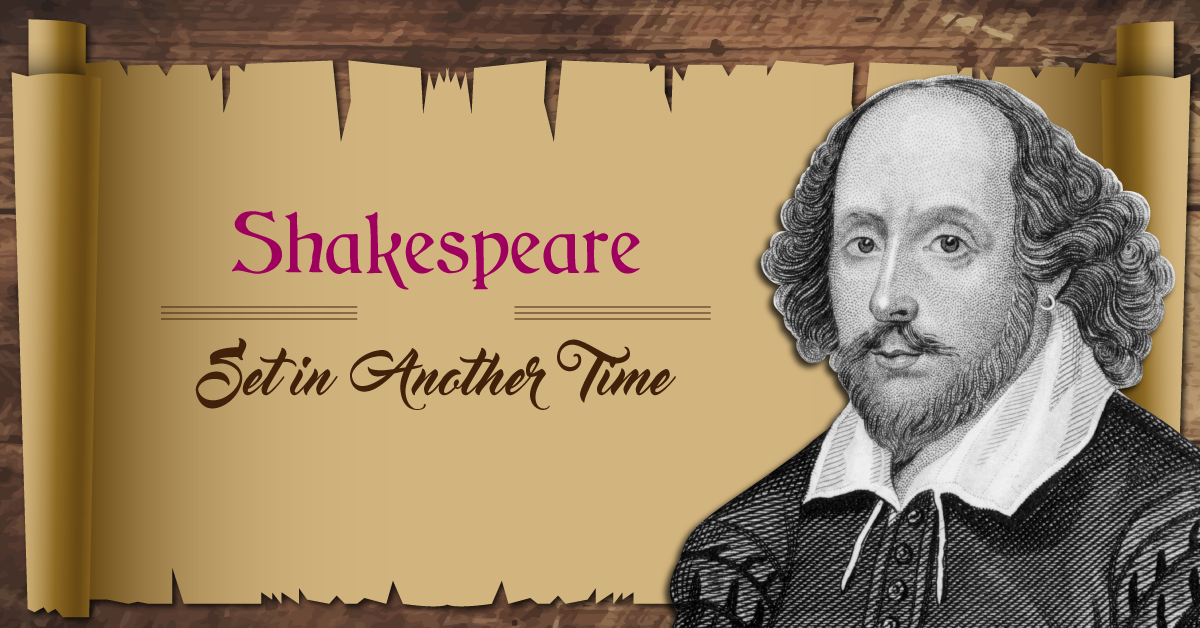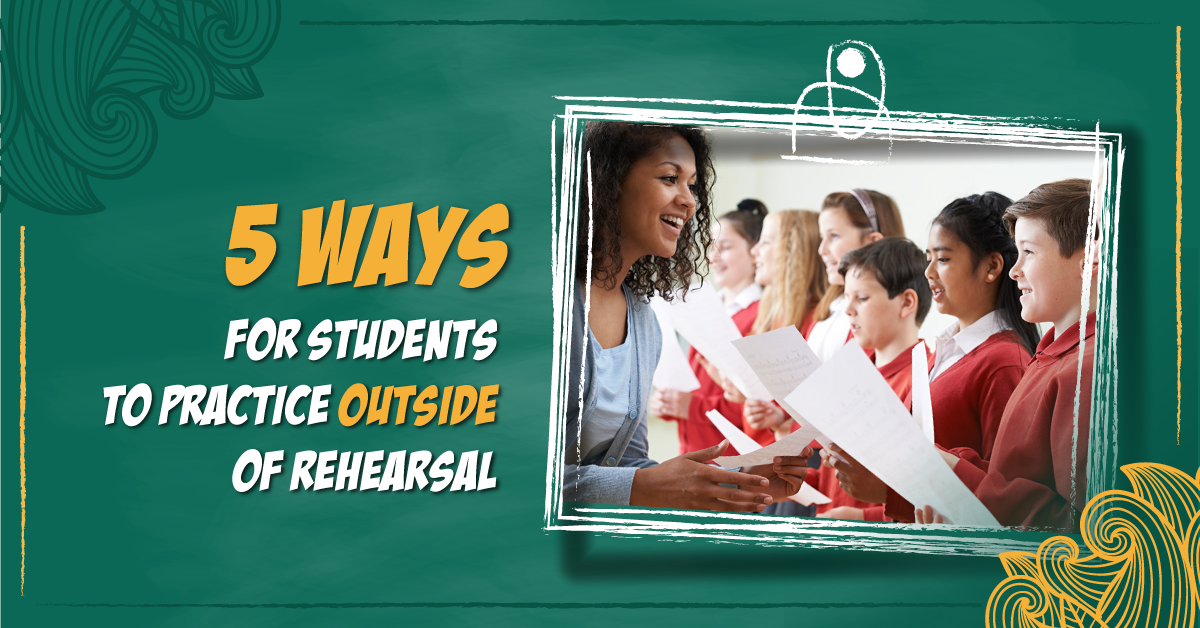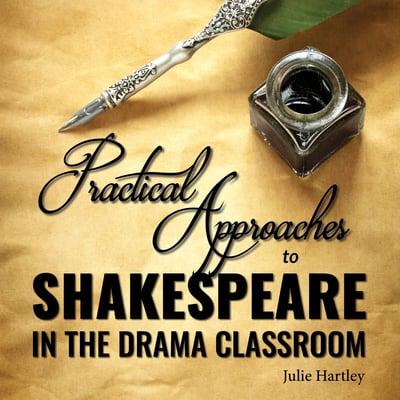Agatha Rex by Lindsay Price is a bold high school take on Antigone - packed with heart, conflict, and a powerhouse ensemble. One girl. One stand. One huge risk. *NEW COMPETITION VERSION AVAILABLE!*
Shakespeare Set in Another Time
Since Shakespearean plays have been around for hundreds of years, we need to shake things up by trying new ideas in order to make these shows different and exciting. One of the most wonderful things about Shakespearean plays is the freedom to be able to set them in another time and place. Here’s a classroom exercise that will get your students thinking outside of the box when it comes to Shakespeare!
There are three variations to this exercise:
1. Students all work on the same play but with different time settings; OR
2. Students all work on different plays set in the same time and place; OR
3. Each group has a different play and a different time setting.
Divide students up into groups. Have each group select a Shakespearean play and a time setting. Here’s a list of time settings, places, archetypes and themes to get you started:
- Traditional English Renaissance
- American Frontier (“Wild West”)
- Paleolithic (dinosaurs/cavemen)
- 1860’s American Civil War
- Roaring 20’s (flappers)
- 1950’s Greasers
- 1960’s (“Mad Men” or “surf culture”)
- 1970’s Hippies/Flower Children
- 1980’s “Yuppies”
- Outer space (modern or retro)
- Vaudeville
- Steampunk
- Circus
- Edward Gorey/Charles Addams/Tim Burton
- Modern (current year)
Students will need to research the history, fashions, political backgrounds and world events that occurred during that time and use it to create a design or performance concept for their selected play.
As a group, they will choose PERFORMANCE or DESIGN, and they will complete the assigned tasks listed below. For a greater challenge, have students complete both sections!
Design
The group will work together to create a themed scrapbook, illustrating the play’s concept. Include the following parts:
1. A set design sketch.
2. A colour scheme, with swatches/fabric samples.
3. Costume design sketches/tear sheets for four characters.
4. A playlist of five songs to be used for atmospheric music, pre- or post-show music, or for the final curtain call (for bonus points, include a CD with the songs).
5. A brief write-up that describes why the concept was chosen for that particular show, and how the concept is going to be used to tell the story.
6. The scrapbook itself should resemble the concept as well. For example, for a Wild West concept show, perhaps the scrapbook has fake bullet holes in the cover; or for a circus concept show, the scrapbook is shaped like a circus tent.
Performance
The group will work together to learn and present a 5-minute scene from the assigned play, illustrating the concept through performance. Have students include the following parts:
1. Pre- and post-scene music.
2. All group members must have lines, and all lines must be memorized.
3. At least one costume item or accessory for each student that illustrates the concept (for example: cowboy hats for a Wild West concept scene).
4. Three or more props that demonstrate the concept (for example: perhaps for a modern concept scene, a letter might be read from a smartphone – or for a Paleolithic concept scene, a letter might be in the form of smoke signals or a cave painting).
5. Students should think about how they can present the concept through their performances. Have them think about accents, jobs, or tasks, and how the characters carry themselves. A steampunk Romeo & Juliet will look and sound very different than a 1950’s greasers Romeo & Juliet! For example, think about the party scene in Romeo & Juliet – a 1950’s greaser version might have the characters at a sock hop, while the steampunk version might have the characters waltzing!
Have all students complete a reflection after the assignment is completed/presented.
Related Articles
Practical Approaches to Shakespeare in the Drama Classroom
by Julie Hartley
Shakespeare is one of the greatest resources a drama teacher can have. But teaching it can be a challenge. Practical Approaches to Shakespeare in the Drama Classroom helps drama teachers break down the Bard to make his themes, language and characters accessible to all.
Script Bundle - Shakespeare plays
A selection of 10 Shakespeare perusal scripts. Whether it's a cutting that uses the original text, a monologue or scene book, or a parody that spoofs the story, these plays offer a great window into Shakespeare's world.





